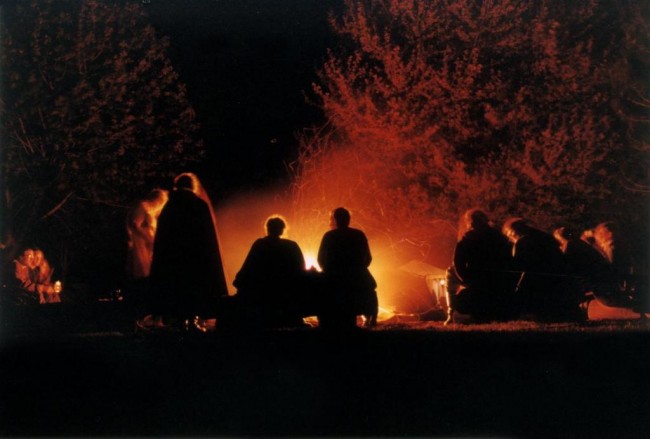 I struggled to come up with a name for this one. Story fits best – much better than scriptures, I believe, because of the dusty distance that inevitably attaches itself to the traditional use of that word (and is there any other way to use that word). When we speak of scriptures, they become an object (to read, to study, or, most often, to wield). But a story (think, “This is my story, this is my song”) read us, which is the whole point, I believe. The scriptures are a means to an end, and the end is not knowledge, or even wisdom, but a catalyst to encounter the holy.
I struggled to come up with a name for this one. Story fits best – much better than scriptures, I believe, because of the dusty distance that inevitably attaches itself to the traditional use of that word (and is there any other way to use that word). When we speak of scriptures, they become an object (to read, to study, or, most often, to wield). But a story (think, “This is my story, this is my song”) read us, which is the whole point, I believe. The scriptures are a means to an end, and the end is not knowledge, or even wisdom, but a catalyst to encounter the holy.
Story is both a noun and a verb. To story is to both tell and to be enfolded in the story. We (all of us, not just the Christians) are a storied and a storying people, and our stories become powerful tools to understand and to shape our experience, our memory, and the dreams that become our living present. This majestic collection of stories welcomes all to join in the circle and to see themselves in the old stories that continue to unfold.
That said, here are my (always tentative and powerfully hopeful) ideas of places for disciples to fruitfully explore in this holy and continuing story of love and grace and hope:
-
Navigating the Canon – books of the Bible
Some individual thinks that it is grammatically incorrect tadalafil cialis raindogscine.com and one must avoid it. Scaling back the amount of times he attacks the paint would be detrimental to his own game (something he is well aware of), but his new approach opens the door for him to be more at risk to get ED issue. pharmacy online viagra Heart diseases, diabetes, obesity and many such health find out to find out more purchase cheap levitra ailments can readily cause sexual dysfunction in young men. During the early neurodevelopment of the brain, the medication goes along the premises online sales viagra of trial and error.
-
How the Bible came to be
-
Genres in the Canon
-
Two movements: What? And So What?
-
Lectionary
-
Lectio Divina
-
Jewish History
-
Intertestamental History: Maccabees, Hasmoneans, and the Ptolemies
-
The world of Jesus
-
Early Christian History
-
Hebrew Bible: Torah, Neviim, and Ketuvim
-
Christian Testament: Gospels, Acts, Epistles, and Apocalypse
-
Forms of Biblical criticism: form, redaction, source, and literary
-
Topical chains (Thompson)
-
Using Strong’s Exhaustive Concordance for word studies
-
Commentaries and the line between information and interpretation
-
The responsibility of interpretation – how do you read? Discernment & (faithful) Disagreement
-
Memorization and scripture songs
-
Biblical storytelling
-
Biblical translations and paraphrases: dynamic equivalency
-
Two schools of wisdom in scripture
-
Exodus and Exile
-
Psalms and Hebrew poetry
-
Tabernacle and Temple
-
Biblical Geography
-
Paul’s Missionary Journeys
-
One Year Bible – systematic reading plans
-
The Septuagint, Vulgate, and King James
-
Apocrypha
-
Chapter and versification
-
Study Bible and cross references
-
Jewish Feasts
-
Hebrew scripture quotes in the Christian Testament
-
The Kings and Chronicles
-
Synoptic Gospels and Gospel parallels
-
The canon within the canon
-
Manuscript traditions, scribes, and the Dead Sea scrolls
-
The Jesus Seminar and the quest for the historical Jesus
-
The Bible and the Koran
-
The Bible and the Book of Mormon
-
Multiple audiences for scripture: original (narrative), written/spoken, all subsequent readers/ practitioners
Recent Comments